OVER PROTOCOL (AİRDROP)
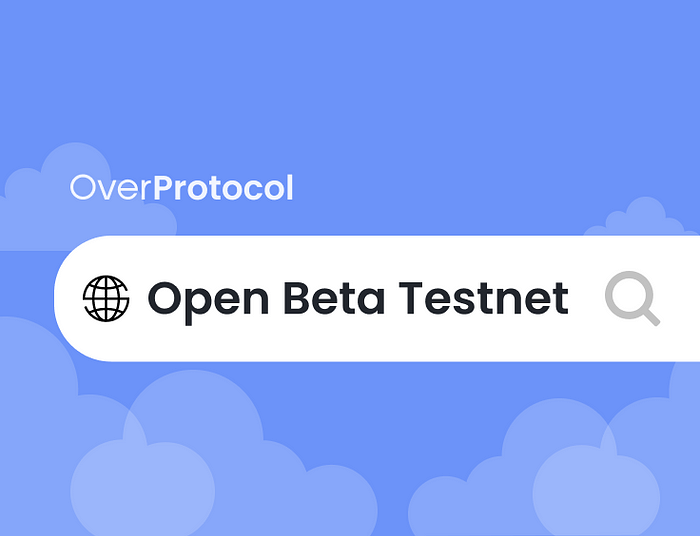
Before you read
- We are planning to launch our mainnet in the first half of next year. To build a solid community and make it easy for users to use our services, we have promised an airdrop through the OCAP program.
- The first quest to get the airdrop is going on OverWallet. For the second quest, you are invited to participate by utilizing OverNode in the ‘Open Beta Testnet.’ The testnet is divided into two seasons. OBT Season 1 runs from December 13th to 22nd, and OBT Season 2 will take place in February next year. The total scores accumulated from both seasons will be taken into consideration for determining the airdrop amount.
- There’s a bit of sad news: Everyone can participate in OBT Season 1, but only those with enough points in OverWallet can complete key missions. To be fully involved in OBT Season 2’s missions, begin accumulating points in OverWallet now. This is designed to offer enhanced opportunities to those who have been actively and consistently engaged in OverProtocol’s ecosystem.
- 🦾 We’ve done our best to prepare, but if any issues arise, we’ll halt the testnet and immediately share our future plans. So, no matter what happens, don’t worry and trust us to guide you. Below, you’ll find the guidelines for participating in OBT Season 1. Get ready now.
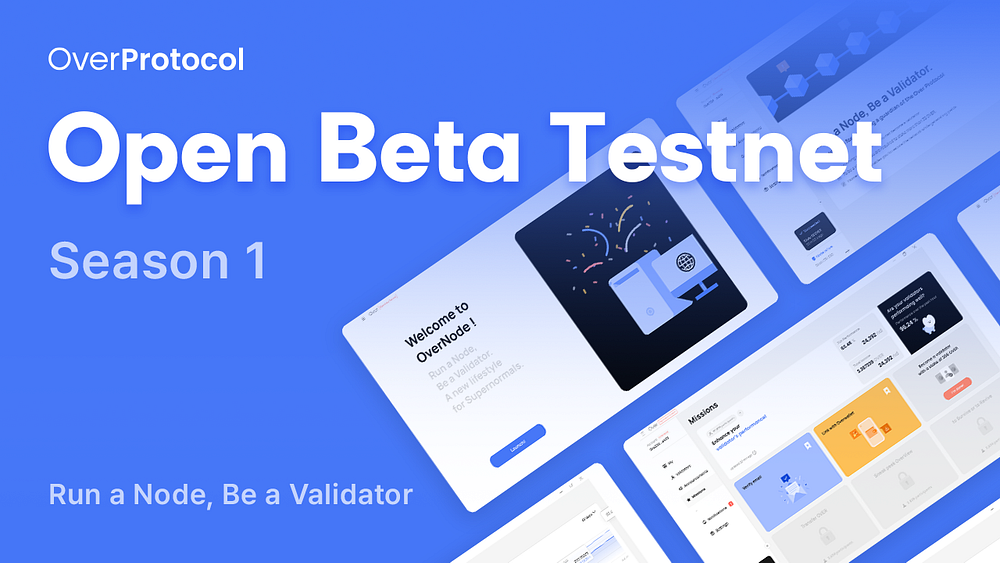
OBT Season 1 — Just remember two things: download OverNode and complete the missions given in the app.
- Before you start, follow the official OverNode X account. You can check all announcements here during the testnet period.
- Starting from Wednesday, December 13th, anyone can download OverNode without any barriers from the official website. The estimated UTC time will be announced through the official OverNode X account.
- For eligibility purposes, the same account used in OverWallet will also be utilized on OverNode. Points in the OverWallet are crucial for participating as a validator. Participants starting with a threshold of 30,000 points will receive OVER(for testing). This requirement may lowered to 10,000 points.
- Even if you meet the eligibility criteria, you might miss out on receiving OVER(for testing) if you act too late. Therefore, please keep up with our announcements to stay informed.
- Not eligible? Don’t worry! Here’s an exciting tip: If you receive OVER(for testing) from someone who already has it, you can complete the missions! Look for a member of the OverNode community who is willing to transfer OVER(for testing) to you.
- OBT Season 1 will end on December 22nd. You can see the countdown in the app 48 hours before it ends. From this point, you can participate in the satisfaction survey. Your feedback will be a great help in preparing for the next season!
- Above are all you need to know, as the app will provide clear and simple guidance on how to participate in the missions. However, for your convenience, we will briefly review the seven types of missions for you.
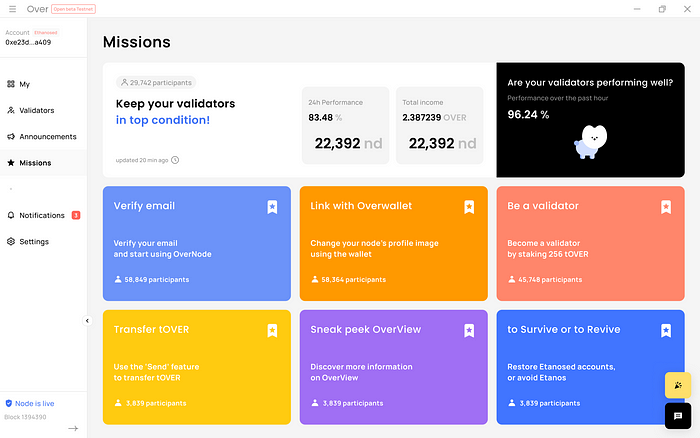 1 Verify Email 🔐 #2
1 Verify Email 🔐 #2
Verify your email to start using OverNode.
- Download and open the app. To access the main screen, verify with your OverWallet signup email. You’ll get OVER(for testing) based on your points after verification.
- If you meet the eligibility requirements at any time, you will automatically receive OVER(for testing) during the testnet period. However, remember that it’s on a first-come, first-served basis.
- Completing Mission #1 will unlock Mission #2.
2 Link to OverWallet 🔐 #3, #4
Change your node’s profile image using the wallet.
- Follow the guide to complete the missions. The data, including the profile image of OverNode, is synchronized with that of OverWallet.
- Completing Mission #2 will unlock Mission #3 and #4.
3 Be a Validator 🔐 #7
Become a validator by staking 256 OVER(for testing).
- If you have sufficient OVER(for testing) to become a validator, try Mission #3️. Be aware that if there are many participants and the queue is full, the waiting time could be lengthy.
- Completing Mission #3 will unlock Mission #7.
4 Transfer OVER(for testing) 🔐 ️#5
Use the ‘Send’ feature to transfer OVER(for testing).
- Sending it to yourself will not be counted as successful completion of a mission.
- Seek out a member of the OverNode community to whom you can transfer OVER(for testing). Anyone with an OverNode account can receive it.
- Completing Mission #4 will unlock Mission #5.
5 Sneak Peek OverView 🔐 ️#6
Discover more information on OverView.
- OverView is an essential tool for exploring data within OverProtocol. Welcome this new companion you’ll frequently encounter in the future.
- Completing Mission #5 will unlock Mission #6.
6 to Survive or to Revive
Restore Ethanosed accounts, or avoid Ethanos.
- What’s Ethanos — When an account has been inactive for a while, Over Protocol considers it inactive and removes it from the valid dataset. In this testnet, if your account remains inactive for 48 hours (approximately 6 months on the mainnet), it will be ethanosed.
- Missions count as successful if you achieve either 1 or 2
- Survive — Keep Active for 3 Days: To avoid Ethanos, maintain daily activity by sending and receiving OVER(for testing) for 3 consecutive days. This consistent activity will prevent your account from being ethanosed and count as a success.
- Revive — Restoring a Ethanosed Account: If your account has been ethanosed, you will receive a notification in the bottom right corner of the node screen. Click the ‘Restore’ button in this notification to revive your account and complete the mission.
#7 Be the Best Validator Operator
Keep your validators in top conditions.
- Maintain your validator operational 24/7 to achieve optimal performance and maximize your total income. The scores and rankings will be factored into the airdrop amount.
- This mission ends with the close of the Testnet.
#Bonus Share your know-how
Keep your validator running smoothly 24/7 and share your know-how on social media (YouTube, blogs, Instagram, etc.).
- Submit the link to your content through the Google Form(To be announced) when the testnet ends.
- We’ll send the official OverProtocol merchandise set (hoodie, t-shirt, cap, stickers, reusable bag) to up to 10 people who provide valuable content to the community.
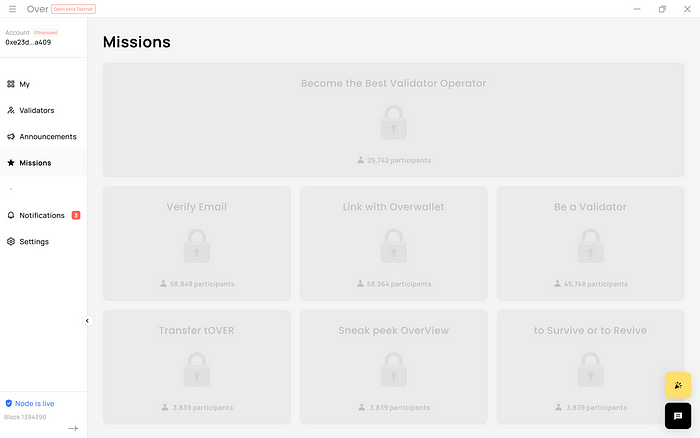
Ready to unlock the potential of decentralization?
Run a node and become a validator. Be a pioneering adventurer in the new era of decentralization.
What is OverProtocol ?
- A blockchain network committed to fostering a truly decentralized ecosystem, allowing anyone to serve as a validator.
- Leveraging ‘Ethanos’, an innovative node optimization technology, it empowers individuals to operate full nodes from their home desktops.
- Driven by the vision of decentralization, OverProtocol aspires to place the power of a new internet right in your hands.
- Mobile crypto wallet application, serving as a gateway to OverProtocol.
- Before the Mainnet launch, the wallet educates users about Over Protocol and blockchain technology, offering rewards that will be usable on Over Protocol upon its release.
- With over 4 million accounts registered and more than 1 million daily users, OverWallet is at the forefront of building a robust community around OverProtocol.
- Node client designed to help users run Over Protocol nodes on their personal computers.
- Featuring an intuitive UX/UI, OverNode allows anyone to seamlessly become a validator for Over Protocol, no computer science background required.
- Its official launch is set for the first quarter of the upcoming year.
Thank you for joining us in Open Beta Testnet Season 1. It’s time to say good bye. We’re closing OBT Season 1 step by step.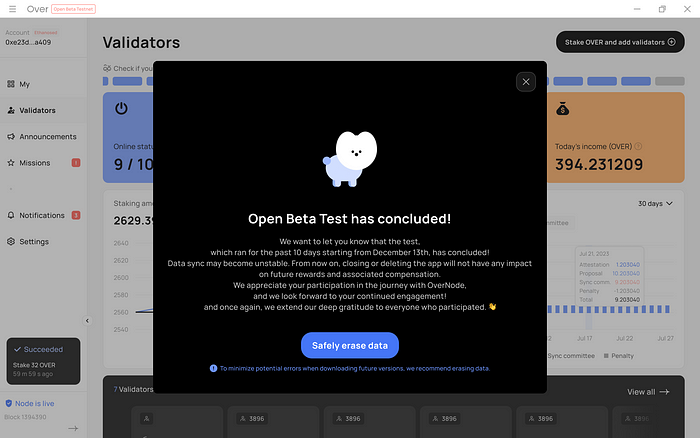 🔹 If You See a ‘Testnet Ending’ Alarm
🔹 If You See a ‘Testnet Ending’ Alarm
Feel free to hit the [Safely erase data] button and exit the OverNode app. The last alert will be on Dec 22, 02:00 UTC.
🔹 About Airdrop (OCAP Quest 2)
The total scores accumulated from Season 1 & 2 will be taken into consideration for determining the airdrop amount. But, we do not provide any answers regarding the criteria for the airdrop.
Check this short video: https://www.youtube.com/shorts/0bUzocq4IkU
🔹 Quick Wrap-up
Over 42,000 global users participated! More than 12,000 tried HomeStaking. Thanks for the amazing support!
🔹Looking Ahead — OBT Season 2
Coming in Feb 2024, we promise an even better
OverProtocol is a special kind of blockchain where anyone can join as a Validator from their home. Validators need OVER tokens, and this program helps people get these tokens before the Mainnet starts.
OCAP stands for “Over Community Access Program” and it has two main parts: Quest 1 and Quest 2, plus some other events.
In Quest 1, you do missions in OverWallet and collect points.
Quest 2 is about joining the OverProtocol Open Beta Testnet with OverNode and getting scores.
And OCAP is one of our airdrop plan. We are planning to launch our mainnet in the first half of this year.
To build a solid community and make it easy for users to use our services, we have promised an airdrop through the OCAP program. Those who actively participate in OCAP’s quests and upcoming events will be eligible for the airdrop.
The first quest will start in mobile crypto wallet, ‘Over Wallet’. You can complete missions in the app and earn points.
Download Over Wallet and be the pioneer in Over ecosystem.
Over Wallet for Android — https://go.over.network/playstore
Over Wallet for Apple — https://go.over.network/appstore
Over, A new birth of Freedom.
A new birth of freedom — and that government of the people, by the people, for the people, shall not perish from the earth.
Abraham Lincoln
Over is all about championing the highest level of freedom. We stand by the idea that everyone should have the freedom to choose, to pursue their passions, and to avoid anything they don’t wish to do. We’ve translated this belief into the blockchain realm, where we ensure that users can effortlessly access data, contribute to the network, and utilize the blockchain without depending on anyone else.
Our goal at Over is to create a design that empowers every user with freedom. We’re building a blockchain that’s light, user-friendly, and safe, fostering effortless participation. Each aspect of our design has been meticulously crafted to embody a freedom-centric blockchain experience. Our key design principles include 1) Compact blockchain nodes that anyone can operate, 2) Open participation in the consensus process, 3) Risk and cost-free blockchain dapp use. In this “Over: A New Birth of Freedom” blog series, we’ll uncover each principle one at a time. So, welcome to the third step of our journey towards redefining freedom in the blockchain world.
Reliable and easy blockchain — no risk and no cost.
At its heart, Over is designed to provide a blockchain ecosystem that’s easy for anyone to use. The unique technologies of the Over Protocol not only allow for anyone to contribute to Over but also use it and have a secure platform for asset management.
Our focus on safety is exemplified by how Over Protocol manages frontend data on the blockchain. Through a system we call Frontend Embedding, we unify the subject of service hosting. This approach ensures that the stability of the service is dictated only by the blockchain network, thereby reducing associated risks. It empowers node operators to verify frontend data directly, eliminating potential risks that could arise from the architecture of traditional blockchain services.
But that’s not all. Our special technologies enable users to perform essential tasks for service operation directly, which significantly eases the cost burden for service operators. Frontend Embedding allows frontend data to be maintained by the network’s nodes, meaning that service providers only need to cover deployment costs. Plus, with users able to assume the role of nodes directly, the requirement for service providers to provision nodes is minimized. This all comes together to make Over Protocol a revolution in cost-effective, user-centered blockchain services.
How did we interact with blockchain?
As the blockchain ecosystem advances, we’re seeing an array of financial services that leverage smart contracts. These services are often delivered in the form of applications where multiple smart contracts interact organically to perform specific functions. These applications, created with one or more smart contracts, are known as decentralized applications or dApps.
Yet, standalone dApps can often be difficult to use. Consequently, alongside dApp development, separate frontend services are typically developed for easy access to dApp functionalities. These frontend services allow users to interact with the dApp without having to manipulate the dApp directly.
But what about contributing to the blockchain network? This requires becoming a node. A node, which could be a computer or server, is an essential part of the blockchain network as it stores and verifies data for the entire network. To become a node, one needs to download and run a client that adheres to the rules defined by the protocol of the specific blockchain.
Once you’ve set up a node, it starts receiving data from other nodes to synchronize with the state of the blockchain network. From there, the network configuration assigns the node a role that fits the requirements. So, whether you’re using a dApp or running a node, interacting with blockchain offers an exciting range of possibilities.
What was the problem?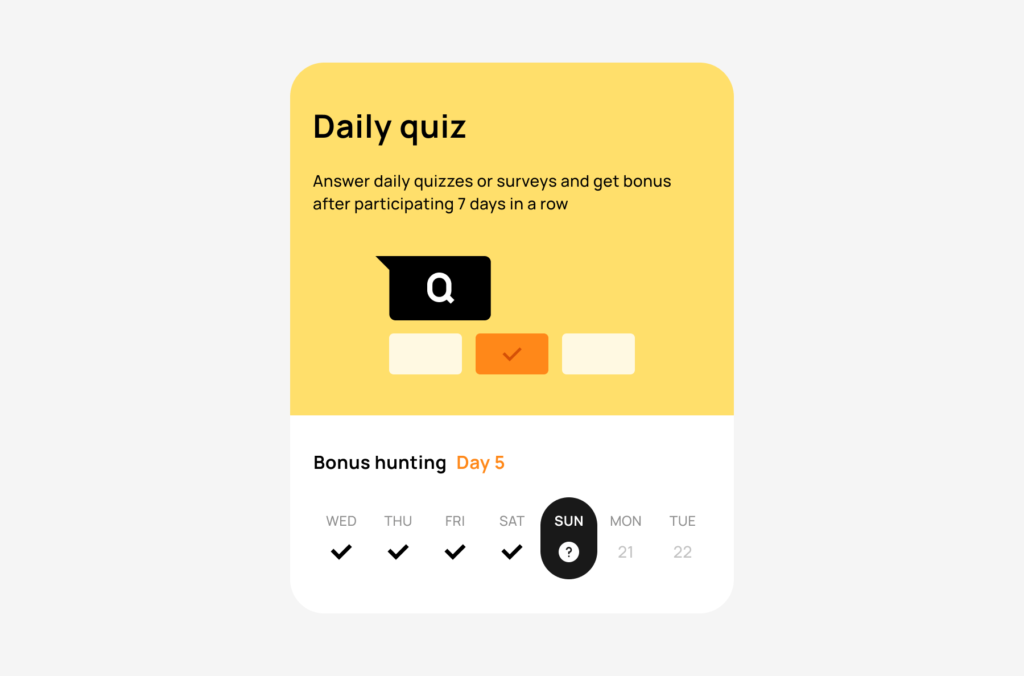
The prevalent use of web applications as frontend services for decentralized applications (dApps) has presented several challenges. As web applications download necessary components upon use, users essentially download frontend data each time they access the service. This data, stored on separate servers and distributed based on user requests, leaves the service dependent on the frontend service provider’s state, exposing users to potential risks.
Users primarily access dApps through these frontend services. If the frontend service encounters issues, even a perfectly functioning blockchain network can’t prevent service disruption. For example, a problem with the server hosting the frontend might prevent data download for several hours, or a fraudulent site could pose as a dApp, leading to compromised assets.
Additionally, the financial burden of maintaining frontend services is continual. Unlike dApps, which only require a one-time deployment cost and are then maintained by nodes within the blockchain network, frontend services necessitate separate infrastructures like cloud services. These carry ongoing maintenance costs, sometimes exceeding $1,000 monthly for services like Uniswap, which stores approximately 2 MB of frontend data on IPFS, hosted via CloudFlare.
Operating a node, another form of interaction with the blockchain, also presents cost barriers. Nodes typically require substantial storage space, sometimes in excess of 1 TB for platforms like Ethereum. Such storage requirements can pose a significant burden for average users, making the cost of participation prohibitively high for many.
How do we solve it?
The novel system of Frontend Embedding offers a solution to these issues by using blockchain infrastructure to host frontend services. This system stores web application data directly on the blockchain, managed according to predefined rules. It forms a strong dependency between the smart contracts and the frontend, effectively turning the blockchain infrastructure into a server that manages frontend data.
Decentralized applications (dApps) leveraging Frontend Embedding exhibit several key characteristics:
The system fosters strong connectivity between the smart contract and the frontend. Users request the frontend from the contract, and the contract is responsible for returning the associated frontend. This structure allows users to trust only the contracts they are actively using, creating a trust model that depends on the actual contracts in use.
Furthermore, the service can operate independently. It adopts a structure where it is hosted by the same entity, ensuring that the stability of the service is only influenced by the state of the blockchain.
Finally, the service becomes decentralized. Each node within the blockchain ecosystem becomes a hosting server, enabling a decentralized approach to service hosting. This transformation not only decentralizes service provision but also enhances service stability. With an increased number of service providers, a reliable and uninterrupted operation is ensured.
The Power of Frontend Revolution: Easiest blockchain control
Frontend revolution in the blockchain brings about the easiest control with its secure, stable, and cost-efficient features. Users can directly interact with the frontend that is firmly associated with the smart contract. This direct interaction eliminates the need to search for a trustworthy frontend and safeguards against potential damage from fake sites. Moreover, by operating a node directly, users can independently verify data such as transactions, thereby protecting personal data, privacy, and reducing the risk from malicious nodes.
The revolution also lowers the barrier to entry for node operation, leading to more nodes being integrated into the network. These nodes contribute to a decentralized network and enhance its overall stability. As the service providers are unified through the blockchain, the services remain uninterrupted as long as the blockchain network operates normally. In addition, users gain more independence and control over the services by operating nodes directly, which allows them to run and utilize services without relying on other nodes.
Lastly, this revolutionary approach is cost-efficient. Similar to smart contracts, frontend data is maintained by nodes within the blockchain ecosystem, eliminating additional costs for maintaining the service beyond deployment expenses. Furthermore, when users run their own nodes, service providers are relieved from the financial burden of providing nodes, as users assume this responsibility themselves.
Future of Over Ecosystem
Envisioned as the platform for the safest service, Over empowers anyone to become a node, increasing the number of service providers and providing users with reliable access to services. When users operate their own nodes, they can directly manage and verify data, ensuring a safer and more secure service experience.
Over also aims to be a platform for completely decentralized service. The burden of node operation is significantly reduced, giving users the option to operate nodes themselves. This flexibility results in the potential for running more nodes at the same cost, providing continuous data responses and transaction processing on the blockchain. Consequently, users can enjoy a more stable service experience.
On the financial side, Over is paving the way to be a platform for costless service. In some instances, services may operate additional servers to provide specific functionalities. These functionalities, often based on the utilization of blockchain’s state data or monitoring changes to gather information, can sometimes lead to the operation of separate servers. These servers can be used to implement features that are challenging to implement on the frontend, especially when users are not actively using it. They can also be used to reduce load on a node, as nodes are responsible for responding to user requests using limited resources, leading to a centralized structure where a few nodes handle most of the services.
In Over, however, operating a node directly is not a difficult task for users. By allowing users to run their own nodes, network load can be effectively distributed. If service providers can incorporate the functional aspects that servers handle, the costs of maintaining servers can be eliminated. These aspects are likely to be efficiently resolved through the product itself, further enhancing the Over ecosystem.
A safe and reliable blockchain experience with Over
In summary, the Over Protocol is poised to revolutionize the blockchain services landscape through its innovative Frontend Embedding technology. This novel approach allows for the seamless integration of frontend data with smart contracts, empowering users to directly engage with blockchain services. With a focus on safety, ease-of-use, and cost-effectiveness, Over Protocol redefines user interaction with the blockchain, paving the way for a future where anyone can become a node operator. By decentralizing service provision and reducing dependency on separate frontend service providers, the Over Protocol ushers in a new era of trust, transparency, and accessibility in the blockchain ecosystem.





































